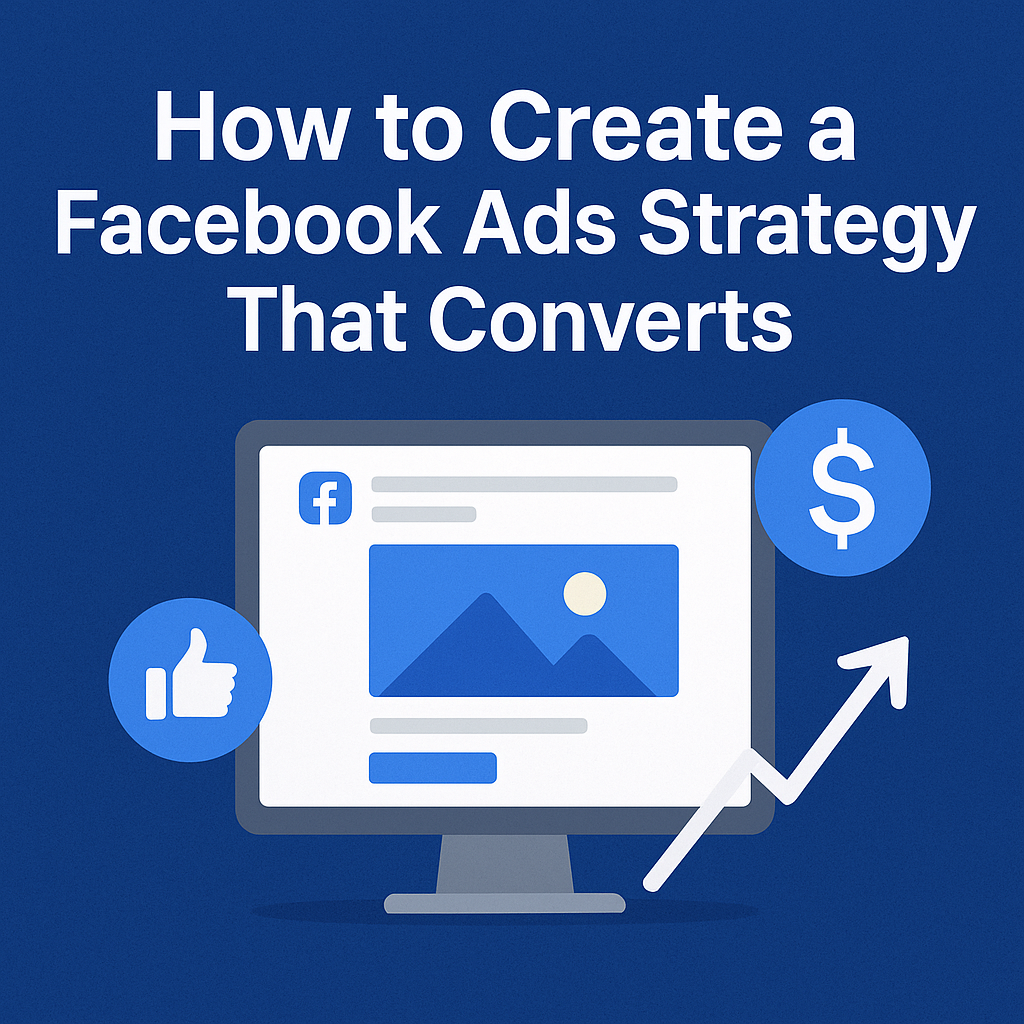How to Create a Facebook Ads Strategy That Converts | Proven Tips & Examples
In today’s competitive digital marketplace, Facebook Ads remain one of the most effective tools for reaching highly targeted audiences and driving measurable results. But here’s the truth: throwing money at Facebook Ads without a clear strategy is like trying to sail without a compass — you’ll spend a lot and drift far without reaching your destination.
A well-crafted Facebook Ads strategy doesn’t just boost brand visibility; it ensures every dollar you spend delivers maximum ROI. Whether you’re a small business, a growing startup, or an established brand, following a proven roadmap will help you create ads that engage, convert, and grow your business sustainably.
In this comprehensive guide, we’ll walk you through everything — from deciding if Facebook Ads are worth pursuing in 2025 to the exact steps for building a strategy that converts.
Are Facebook Ads Worth Pursuing in 2025?
Facebook remains the largest social media platform in terms of active users, with over 3 billion monthly active accounts. Despite competition from TikTok, Instagram, and YouTube, Facebook’s advanced targeting options and integrated ad ecosystem make it a powerhouse for businesses.
Why Facebook Ads are still worth it:
- Precise audience targeting – You can target by demographics, interests, behaviors, and more.
- Cost flexibility – Campaigns can run with budgets as low as $5/day, scaling up as you see results.
- Advanced analytics – Facebook Ads Manager provides in-depth insights into ad performance.
- Diverse formats – From video ads to carousel ads, you can match your creative to your audience’s preferences.
💡 Pro Tip: Many brands see better ROI when using Facebook and Instagram Ads together since both run under Meta’s advertising platform.
What to Know Before Setting Up Your Facebook Ads
Before launching your first campaign, set yourself up for success by addressing these foundational steps:
1. Define Your Business Goals
Every ad should serve a clear purpose — whether it’s driving traffic, generating leads, increasing sales, or building brand awareness.
2. Understand Your Target Audience
Use Facebook Audience Insights to learn your audience’s age, gender, location, and online behavior.
Example: If your business is a local coffee shop, targeting within a 5–10 km radius ensures you’re not wasting ad spend on people too far away.
3. Allocate a Realistic Budget
While Facebook Ads are flexible, a testing budget is essential. Start small, analyze results, then scale.
4. Prepare Your Creative Assets
High-quality images, engaging videos, and clear ad copy are non-negotiable.
[Internal link: Folotek Graphic Design Services]
15 Facebook Ads Strategy Tips
Here’s a detailed breakdown of proven tactics:
Tip 1: Start with Audience Research
Use data from past campaigns, Google Analytics, and customer surveys to shape targeting.
Tip 2: Choose the Right Campaign Objective
Facebook offers objectives like Awareness, Consideration, and Conversion. Match your goal with the right one.
Tip 3: Use Custom Audiences
Upload your email list or retarget website visitors for better engagement.
Tip 4: Test Multiple Ad Creatives
Run A/B tests on different images, headlines, and CTAs.
Tip 5: Leverage Lookalike Audiences
Reach new people similar to your best customers.
Tip 6: Write Compelling Ad Copy
Your headline should grab attention, and your CTA should inspire action.
Tip 7: Use the 80/20 Rule for Content
80% value-driven content, 20% promotional.
Tip 8: Track Conversions with Facebook Pixel
Install the Facebook Pixel to measure results accurately.
Tip 9: Optimize for Mobile
Most Facebook users are on mobile, so ensure your visuals and copy are mobile-friendly.
Tip 10: Use Video Ads for Higher Engagement
Short, engaging videos often outperform static images.
Tip 11: Schedule Ads for Peak Times
Run ads when your audience is most active.
Tip 12: Retarget Abandoned Carts
Send reminders to people who visited your site but didn’t purchase.
Tip 13: Keep an Eye on Frequency
Too many impressions can cause ad fatigue.
Tip 14: Monitor & Adjust in Real-Time
Use Facebook Ads Manager to tweak underperforming campaigns.
Tip 15: Analyze, Learn, and Improve
After each campaign, review KPIs like CTR, CPC, and ROAS.
Here’s a More Detailed Breakdown:
Choosing the Right Ad Format
- Carousel Ads – Great for showcasing multiple products.
- Lead Ads – Perfect for collecting emails without leaving Facebook.
- Collection Ads – Ideal for e-commerce stores.
Budgeting Strategies
- Daily Budget – Good for consistent campaigns.
- Lifetime Budget – Best for time-limited promotions.
Measuring Success
Focus on conversion metrics, not just vanity metrics like likes and comments.
FAQs
1. How to make a Facebook ad strategy?
Define your goals, research your audience, choose your campaign objective, create engaging creatives, test, and optimize.
2. What is the 20 rule on Facebook ads?
Your ad image should have less than 20% text for optimal reach.
3. What is the 3 2 2 method of Facebook ads?
It’s a creative testing approach — 3 versions of ad copy, 2 headlines, and 2 visuals.
4. Do we really see 4000 ads a day?
On average, yes — across multiple digital channels.
5. How to run Facebook ads to get leads?
Use Lead Ads with targeted audiences and a strong CTA.
6. What is level 3 in Facebook?
It typically refers to page access levels — Level 3 can post and manage ads.
7. How to run Facebook ads for beginners?
Start with a simple awareness campaign, low budget, and clear targeting.
8. How much do Facebook ads cost per month?
Costs vary, but many small businesses spend $200–$1000/month.
9. How to avoid fake leads on Facebook ads?
Use lead verification tools and target high-quality audiences.
Conclusion
Facebook Ads aren’t just about visibility — they’re about connecting with the right audience at the right time with the right message. By following this guide, you’ll create campaigns that don’t just run but truly convert.
Whether you’re a small business owner, a marketing professional, or part of a creative agency, the principles here will help you maximize ROI and grow your brand.

